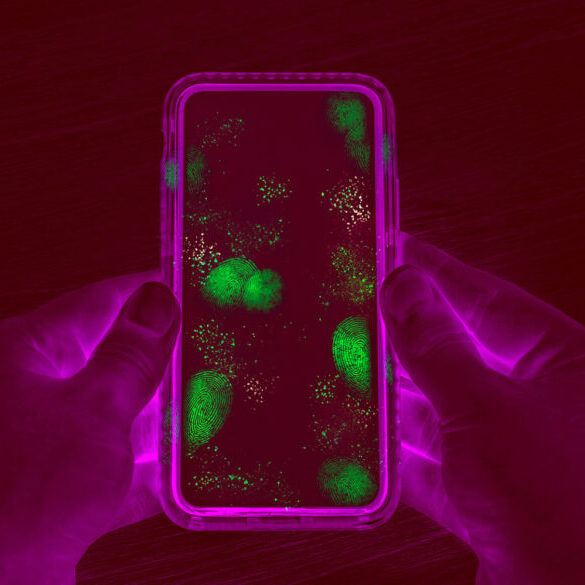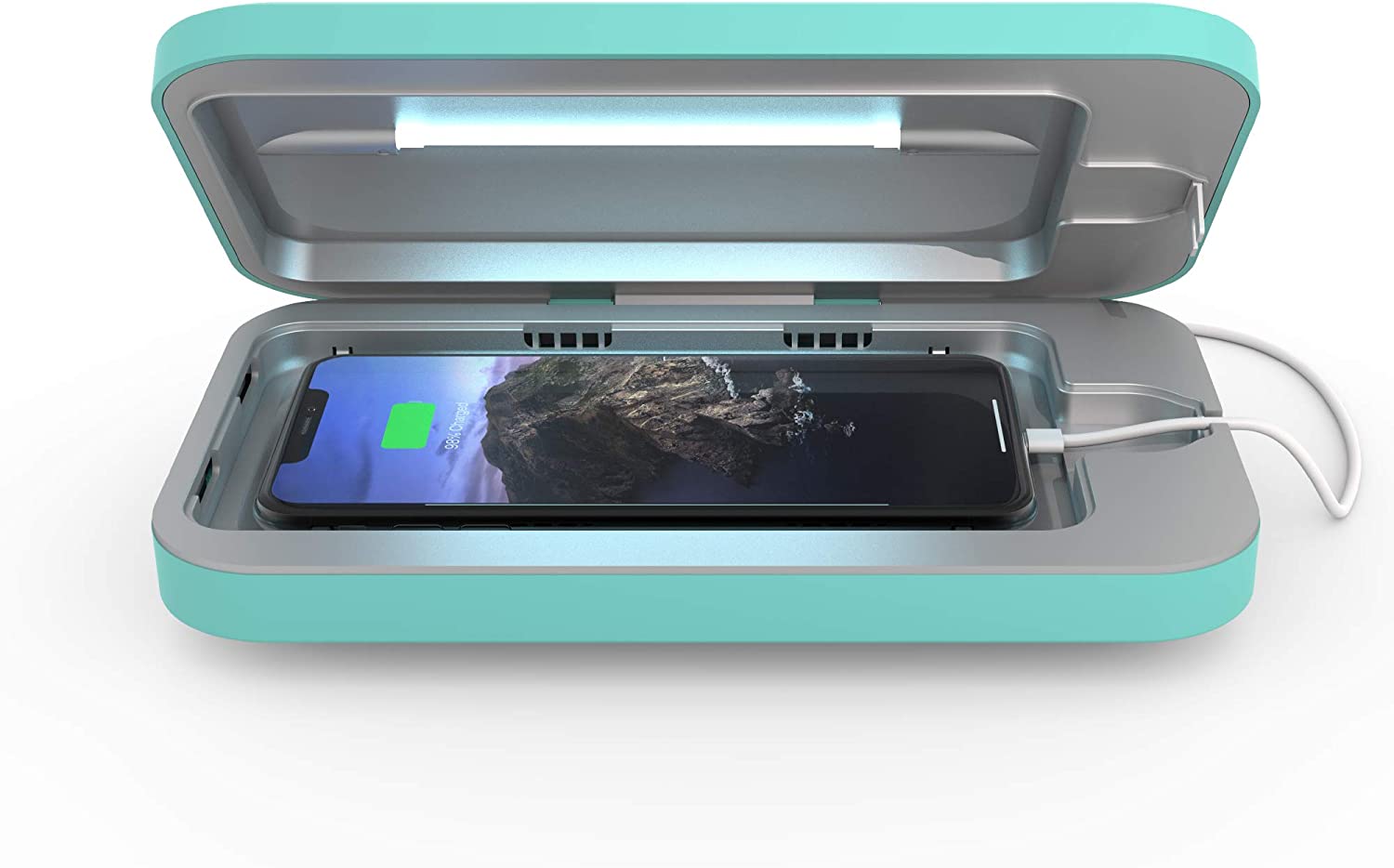
Every time I walk in the house, I set my phone down and wash my hands for two minutes. Then I pick my phone up, pocket it, or respond to a text and go about my life at home.
Sound familiar? Now think like an epidemiologist. Where’s the flaw in that system?
Hand washing is the best way to prevent the spread of disease, according to the CDC. But that phone has become like a third hand. It goes everywhere with me. I probably touched it a thousand times while I was out. So, failing to wash my phone is an enormous flaw in an otherwise solid infection-prevention scheme. It’s so big a flaw, in fact, that it might be undermining much of my effort.
But how do you wash a phone? You can’t really run it under hot soapy water ten times a day. (Unless you have the ruggedized Cat S42 phone $310, which is designed for construction environments and is completely waterproof!)
Water-resistant consumer devices usually come with an IPX rating of anywhere from IP-0 (no resistance) to IP-8 (impervious). Most water-resistant phones can handle getting caught in a rainstorm, a drop into a puddle, or even the occasional dunk into a body of water. But most phones can’t handle soap, frequent submersion, or going with you for a swim.
Many of Apple’s iPhones, for example, claim an IP rating of IP68 but Apple warns all iPhone owners to avoid swimming or bathing, exposing the phone to pressurized water or high velocity water — such as showering, water skiing, wakeboarding, surfing, jet skiing, and so on — intentionally submerging it in water, or exposing it to soap or detergent.
Fortunately, there is an easier way to wash a phone anyway: UV-C Light.
Germicidal UVC light has been proven to be an excellent way to kill germs and is used as a secondary cleaning solution in hospitals and for sterilizing empty subway cars and places like that. It has been shown to effectively kill viruses, including Covid-19. Unfortunately, it doesn’t discriminate between virus cells and human cells. It destroys them all equally.
UVC light, though, is so effective – and doesn’t require soap and water – at killing viruses that scientists are working on developing tools that use a UV light spectrum (far-UVC) that kills viruses but does not penetrate skin or eyelids and so is safe for human exposure. The hope is to use machines that emit this light to continuously disinfect public places. According to a study done at Columbia University, this emerging science shows a great deal of promise.
But your phone doesn’t have delicate skin and eyes. It can easily handle a bath in conventional germicidal UVC light. All you need is a device that washes your phone in this light spectrum while protecting you from same.
There are dozens of products that do this on the market. Here are a few – for different use cases – to consider.
PhoneSoap 3 UV Smartphone Sanitizer & Universal Charger

The PhoneSoap 3 ($79.95) is so simple and easy. Drop your phone in here and let it grab a charge and take a bath in germicidal UVC while you wash your hands or sleep. Now, your ‘third hand’ (the phone) is as clean as your other two hands and no electronics suffered a water bath to get there. The PhoneSoap is compact enough to sit on a small shelf in the bathroom or on your bedside table. But it’s built to house – and charge — any smart phone. You can also pop your keys or watch or anything else that will fit in it for a disinfecting light bath.
Doctor’s Choice UV Light Sanitizer
Do you cart a lot of gear with you out into the world? The Doctor’s Choice UV sanitizing case ($99.99) is big enough to handle all of it. Throw your sunglasses, the baby binky, your keys, a phone, a tablet, your mask into it hit a button and murder all those viruses and bacteria before they can wreak any harm on your home.
EVLA UV Sterilizer Box
This family sized UV Sterilizer ($179.97) box is big enough to drop the kids stuffed animals into. It will disinfect all your face masks. Throw the baby bottles in there. And, of course, it will clean everyone’s everyday carry: phone, keys, glasses, pocket knife, and whatever else you – and yours – take out into the world.
A UV Light Wand
If a UV Light sterilization box is a reasonable way to disinfect objects – at least those that fit into the box — and hospitals and other public space use UV light to disinfect rooms, it seems like a reasonable leap to a wand that you can wave it at a car’s steering wheel or gear shift or the interior of your Lyft or hotel room and make your space safer. There is certainly no shortage of these available on Amazon. And many of them are only about $20. Red alert! Be careful. This is not a reasonable leap to make.
Here’s are the two biggest reasons why:
- UVC light – in a spectrum that disinfects – is dangerous to your eyes and skin. Waving it around a room or car can be very hazardous to the people and pets in those places. Hospitals use it to disinfect empty rooms, not cars or rooms with people in them.
- There are a lot of fakes. According to The Discovery Channel, in fact, most of these wands are fake. You can’t tell from looking at them because the human eye can’t see UV light. THe blue light they emit comes from an LED, which does nothing to disinfect. If you are considering a wand, check its specs. If it says it emits light in a UV range from 100 to 280 nanometers, it will disinfect. But it will also damage eyes and skin and cause cancer. So, you have to be extremely careful using it.
I can’t, in good conscience, recommend these so I’m no including any examples.
When scientists come out with a solution that uses the gentle UVC-far light, though, I’ll be right back here with some suggestions.
